Community Pharmacies Help to Improve Access to Health Care
Pharmacists leverage socioeconomic insights to combat health disparities, enhancing access to medications and public health services in underserved communities.
A better understanding of socioeconomic and infrastructure factors can help pharmacists reduce health inequalities, according to study data published in Public Library of Science.1
“Access to medications and health services is an important public health priority related to the ongoing national discussion on health care disparities across the US,” the study authors said.1 “The increasing number of pharmac[ies] closing nationwide represent a growing obstacle for patients to access medications.”
According to findings from a review published in Preventive Medicine, community pharmacies play a large role in public health services beyond traditional filling of medication. Pharmacists can now offer primary or secondary disease prevention, including smoking cessation, weight management, alcohol misuse, syringe and needle exchange, inoculation, screening, and chlamydia testing. In the review, the majority of studies reported on health inequalities with targeted interventions, which can help close the gap between the least and most disadvantaged patients.2
Health disparities can cause social, economic, and environmental disadvantages, which can be used by pharmacists to better inform their clinical practices. Because of the access to pharmacies, pharmacists can help improve the disparities in vaccination rates as well as increase patient trust. Further, pharmacists can also help to reduce or eliminate structural inequality in health care.3
In the current study, data from the 2020 decennial Census and the 2021 five-year American Community Survey were used, including population counts and estimates of social and demographic characteristics. Approximately 83,398 census tracts had population and income data, and investigators included these in the analytic cohort. Overall, 3105 census tracts were classified as pharmacy deserts, including over 10 million people, which equated to 3.1% of the US population. Pharmacy deserts typically had lower proportions of female patients and patients over the age of 65 years.
Additionally, they also had a higher proportion of inhabitants with a high school education or less, no health insurance, and ambulatory disability. Median income was also lower in pharmacy deserts, which had more Black, Hispanic, and American Indian and Alaskan Native (AIAN) inhabitants. Furthermore, pharmacy deserts had a higher median digital divide index (DDI), more prominent infrastructure development, and a high redlining index.1
Investigators found that census tracts with a high redlining index had a 2-fold increase in being in a pharmacy desert, and census tracts with moderate or high DDI were more likely to be a pharmacy desert. Further, the investigators found that census tracts categorized as more segregated in relation to Black, Hispanic, or AIAN populations were more likely to be characterized as pharmacy deserts, as well as populations with higher proportions of less than high school education, no health insurance, and ambulatory disabilities.1
“These data suggest that vulnerable communities already facing economic and social challenges are being left with reduced access to pharmacy services, potentially exacerbating existing health disparities,” the study authors said.1 “Census tracts affected by contemporary redlining had a greater risk of being pharmacy deserts, highlighting how systemic underinvestment may play a significant role in exacerbating health disparities among already disadvantaged populations.”
READ MORE:
Ready to impress your pharmacy colleagues with the latest drug information, industry trends, and patient care tips? Sign up today for our
REFERENCES
1. Catalano G, Woldesenbet S, Pawlik TM. Distribution of pharmacy deserts and its association with digital divide and residential redlining across the United States. PLoS One. 2025;20(8):e0330027. doi:10.1371/journal.pone.0330027
2. Thomson K, Hillier-Brown F, Walton N, Bilaj M, Bambra C, Todd A. The effects of community pharmacy-delivered public health interventions on population health and health inequalities: a review of reviews. Prev Med. 2019;124:98-109. doi:10.1016/j.ypmed.2019.04.003
3. Hurley-Kim K, Unonu J, Wisseh C, et al. Health disparities in pharmacy practice within the community: let's brainstorm for solutions. Front Public Health. 2022;10:847696. doi:10.3389/fpubh.2022.847696
Newsletter
Pharmacy practice is always changing. Stay ahead of the curve with the Drug Topics newsletter and get the latest drug information, industry trends, and patient care tips.













































































































































